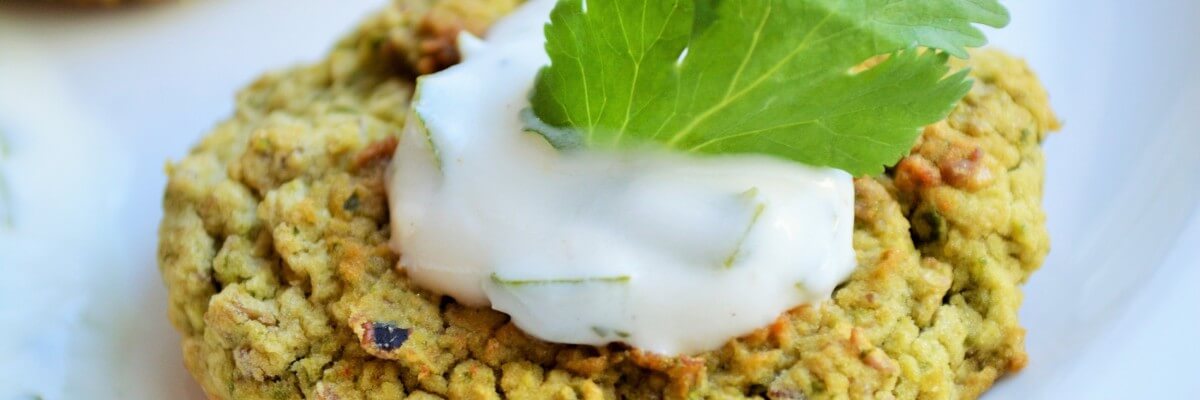Unless you’re from the Middle East or love Middle Eastern food, are a vegetarian, or self-proclaimed foodie, you may have never tasted the delightful “Falafel” before. Falafel is a middle-eastern food made from ground chickpeas, fava beans, herbs, and spices, that are fried and served in a pita or with a sauce. Recently, my husband and I went to a Little Lebanese restaurant by our house and had falafel as an appetizer to our meal. Quite delicious I might add. I’ve had it out in the past, but have always wanted to make it myself, so that experience kicked me in the butt to do so.
I have an excellent Mediterranean cookbook that features authentic recipes prepared in traditional ways. This of course was my first resource when seeking the real way to make falafel. Unfortunately, many times in the United States (like if you purchase falafel at the grocery store), they add Panko Bread crumbs…bread crumbs, really? It’s just like Americans to ruin a traditional dish by adding gluten instead of the appropriate ingredients. Always liking a good ethnic food challenge, I decided to test making my own falafel, which is actually quite easy and inexpensive. So today, I’d like to share with you the recipe I made based off of authentic falafel.
Traditionally, falafel is deep fried. However, you need a lot of oil to deep fry. Since I don’t use the vegetable oils (which are usually used due to low cost), and I don’t feel right about boiling Olive Oil (due to delicate fat structure and large amounts required for frying), and I would need a ton of coconut oil or butter, which are expensive, frying seemed a less than viable option. I tried pan frying vs. deep frying, but the falafel are like sponges to the oil and it did not work very well…thus, baking seemed a good option.
Basically, this is a less-expensive, easier way to make falafel, and the finished product is less oily when baked.
I would also like to point out the high fiber and nutrient content of falafel. I had never purchased fava beans before, but they are a rich source of fiber, Folate, Manganese, Iron, and protein. Not to mention that there are many nutrients and beneficial compounds from the herbs and spices.
These little guys make an awesome snack or appetizer at your next get-together!
As always, I recommend purchasing dry beans, soaking them overnight, and boiling/cooking the next day for about 2 hours vs. buying canned. However, you are able to use canned for the recipe, but preparing beans yourself helps remove the anti-nutrients that rob minerals from absorption. See directions below for preparing your own beans.





 Metagenics Supplements
Metagenics Supplements